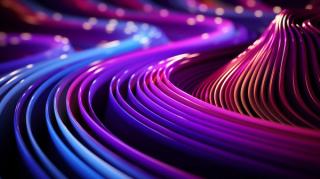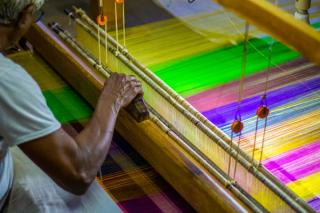
Business beyond compliance: The need for human rights action
by Heba Megahed, Miguel Oyarbide
View post

As we navigate through the digital age, our planet is facing unprecedented environmental and sustainability challenges, and humanity is under significant pressure to behave more sustainably. In every aspect of life, sustainability is a key consideration that everyone should be aware of. Innovation is key, and diversifying the strategies we use may help to alleviate these environmental challenges. This diversification will help to tackle sustainability head on, providing a wider range of solutions to help overcome some of the larger challenges that society faces. Now however, there is a new concept making waves in the world of sustainability, offering new ways of strategic thinking. The concept of a digital circular economy is a new and modern approach to sustainability. On the surface, it is the concept of combining traditional principles of the circular economy with digital technologies, with the overall aim of promoting more sustainable practices. Digital tools such as the Internet of Things (IoT), artificial intelligence (AI), and blockchain play pivotal roles in this transformation, allowing for a more sustainable, efficient, and economically viable ecosystem. It is focussed on how these systems can work together to achieve a better sustainability effort.
Every day AI is growing at an unprecedented rate, with the rise of generative AI systems such as ChatGPT bringing this into the mainstream. In almost every aspect of life, AI has some kind of input, making it impossible to ignore. However, the reality of this is that while most consumers will use this for novel purposes, the potential for revolution across industries is almost endless, such as providing the ability to identify and analyse complex data patterns, or troubleshooting complicated issues[1]. The possibility to use AI algorithms to drive the transition towards circularity has been noted, with multiple possible approaches ranging from generative AI designing more circular products, to removing human input to streamline circular processes[2]. AI can become a key consideration when discussing sustainability efforts.
However, the benefits of AI do not come without an environmental cost. To keep the datacentres that power ChatGPT cool, a substantial amount of water is consumed, with an average user’s conversation of 5 to 50 prompts estimated to require around 500ml of water[3]. Despite this significant water usage, AI may be the solution to the problem that it creates. One potential use is utilising AI to actively analyse water usage patterns to identify areas of water inefficiency, especially in the infrastructure sector [4]. Additionally, a pilot program in Southwestern UK has sought to use AI to analyse water content in real time to avoid or minimise the effects of water pollution[5]. Thus, although the water usage of AI could be considered by some as extreme, with the correct usage, this may be offset through positive change.
Blockchain is, on the surface, a digital ledger or record-keeping system that stores data in blocks that are linked together in a chain. Once a block is added to the chain, it cannot be altered or removed[6]. Although traditionally used in cryptocurrencies, blockchain has a wide range of unique uses due to its ease of traceability. In terms of circularity, blockchain provides the ability to trace a product from its origin, providing a record of all materials throughout its lifespan so that the rates of reuse, remanufacturing, and recycling can be increased[7].
Suez, a water and waste management company, has successfully developed and implemented their own version of blockchain centred around the circular economy. Dubbed ‘CircularChain’, Suez’s blockchain helps increase transparency throughout the waste management sector, allowing for increased reliability and traceability[8].
Additionally, the European Union is seeking to introduce a “Digital Product Passport” (DPP), initially in 2026/27, with most products forecasted to be covered by 2030. This scheme utilises blockchain technology to track a product throughout its entire lifetime, with the aim to reduce greenwashing and providing more transparency to consumers[9]. SLR is actively involved in the implementation of the DPP throughout Europe by joining CIRPASS, a consortium of core network leading organisations focused on building a unified DPP. As a member, SLR actively contributes to management and coordination of projects, regularly updating the Annex of DPP-related solutions that are currently on the market and stakeholder outreach[10].
The IoT is a network of devices that allows for the exchange of data between devices and the cloud, without any requirement for human interaction. Any device, or ‘thing’, in this network can autonomously collect, send, and process data that it acquires from its environment[11]. The IoT is arguably one of the most important drivers of a digital circular economy, allowing for increased supply chain visibility, real-time analytics, and greater control over operations[12]. When considering this from a real-world perspective, a manufacturer may seek to incorporate a smart sensor within their equipment, which can alert technicians when a potential issue is detected, allowing for early repair rather than total replacement. When this is paired with cloud computing, huge amounts of data can be stored with relevant ease and shared across long distances in a short period of time. Although providing a significant amount of positive environmental impact, we must remain cautious to the fact that a widespread distribution of the IoT requires a significant increase in electronic devices, which may directly lead to an increase in e-waste. A simple solution to this may be to ensure that said devices do not have any form of planned obsolescence in their design[13] (which may be easier said than done), allowing the vast array of positives provided by the IoT to truly shine.
Although implementing a digital circular economy may seem like a perfect solution to help tackle the climate crisis, there is one key drawback. Accounting for ~54 million tonnes of annual waste production, with a mere 17% recycling waste, and being potentially toxic, e-waste is one of the most damaging sources of waste according to the United Nations[14]. Unfortunately, relying on this same technology that ultimately contributes to the e-waste crisis, a digital circular economy may not be as viable as originally thought. However, it is important to recognise the broader potential of a digital circular economy in reducing other forms of waste, and multiple avenues to achieve this have been identified. Firstly, smart waste bins that have internal sensors are able to detect contamination. Said bins photograph anything that is placed inside, utilising AI to then decide whether this item is general waste or recycling. In the event of two items being disposed of simultaneously, the AI will determine whether the items should go to general waste or recycling based on predetermined customer input[15]. Additionally, utilising AI to automate waste collection and disposal processes, and incorporating robotics driven automation into waste disposal facilities to help recover critical materials, are other approaches that could be utilised to bolster waste reduction strategies[16]. When considering this, perhaps the benefits of technology, that may soon be implemented on a larger scale, will outweigh the negative of e-waste.
The digital circular economy represents a transformative approach to sustainability, utilising the key tools of IoT, AI, and blockchain to create a more circular industrial system. By integrating these tools, businesses can achieve greater resource efficiency and innovation, whilst also contributing towards a more sustainable economy. However, the challenge of e-waste still persists, reminding us of the complexities of relying heavily on digital technologies to solve environmental issues. As we move forward, it will be crucial to balance innovation with responsibility, ensuring the pursuit of a digital circular economy does not contribute to the problems it was designed to solve. In this endeavour, SLR stands ready to provide any assistance in achieving digital circularity. With our expertise in sustainability strategies, SLR can guide your business through the complexities of adopting a digital circular economy, ensuring your journey towards sustainability is both innovative and responsible.
References:
[1] https://www.gao.gov/blog/artificial-intelligences-use-and-rapid-growth-highlight-its-possibilities-and-perils
[2] https://www.mckinsey.com/capabilities/sustainability/our-insights/artificial-intelligence-and-the-circular-economy-ai-as-a-tool-to-accelerate-the-transition
[3] https://apnews.com/article/chatgpt-gpt4-iowa-ai-water-consumption-microsoft-f551fde98083d17a7e8d904f8be822c4
[4] https://www.corgan.com/news-insights/2023/ai-in-indoor-water-conservation
[5] https://diginomica.com/big-data-has-big-water-problem-ai-answer
[6] https://www.investopedia.com/terms/b/blockchain.asp
[7] https://www.ellenmacarthurfoundation.org/tech-enablers-series/part-2
[8] https://www.suez.com/en/about-us/innovation-approach/circularchain-the-circular-economy-blockchain
[9] https://www.protokol.com/insights/digital-product-passport-complete-guide
[10] https://www.slrconsulting.com/projects/cirpass-digital-product-passport/
[11] https://www.techtarget.com/iotagenda/definition/Internet-of-Things-IoT
[12] : https://www.ellenmacarthurfoundation.org/tech-enablers-series/part-3
[13] https://www.investopedia.com/terms/p/planned_obsolescence.asp
[14] : https://www.unep.org/news-and-stories/story/how-disposable-tech-feeding-e-waste-crisis
[15] https://resource-recycling.com/recycling/2024/01/02/smart-bins-target-contamination-at-street-level/
[16] https://www.eea.europa.eu/themes/waste/waste-management/digital-technologies-will-deliver-more

by Heba Megahed, Miguel Oyarbide

